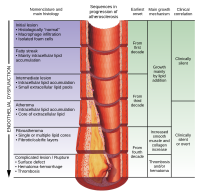
Photo from wikipedia
INTRODUCTION Peri-implantitis is the leading cause of dental implant loss and is initiated by a polymicrobial dysbiotic biofilm formation on the implant surface. The destruction of peri-implant tissue by the… Click to show full abstract
INTRODUCTION Peri-implantitis is the leading cause of dental implant loss and is initiated by a polymicrobial dysbiotic biofilm formation on the implant surface. The destruction of peri-implant tissue by the host immune response and the low effectiveness of surgical or non-surgical treatments highlight the need for new strategies to prevent, modulate and/or eliminate biofilm formation on the implant surface. Currently, several surface modifications have been proposed using biomolecules, ions, antimicrobial agents, and topography alterations. AREAS COVERED Initially, this review provides an overview of the etiopathogenesis and host- and material-dependent modulating factors of peri-implant disease. In addition, a critical discussion about the antimicrobial surface modification mechanisms and techniques employed to modify the titanium implant material is provided. Finally, we also considered the future perspectives on the development of antimicrobial surfaces to narrow the bridge between idea and product and favor the clinical application possibility. EXPERT OPINION Antimicrobial surface modifications have demonstrated effective results; however, there is no consensus about the best modification strategy and in-depth information on the safety and longevity of the antimicrobial effect. Modified surfaces display recurring challenges such as short-term effectiveness, the burst release of drugs, cytotoxicity, and lack of reusability. Stimulus-responsive surfaces seem to be a promising strategy for a controlled and precise antimicrobial effect, and future research should focus on this technology and study it from models that better mimic clinical conditions.
Journal Title: Expert review of medical devices
Year Published: 2023
Link to full text (if available)
Share on Social Media: Sign Up to like & get
recommendations!